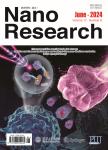Ultrafine MoO_(x)clusters anchored on g-C_(3)N_(4)with nitrogen/oxygen dual defects for synergistic efficient O_(2)activation and tetracycline photodegradation
作者机构:State Key Laboratory of Organic-Inorganic CompositesCollege of Chemical EngineeringBeijing University of Chemical TechnologyBeijing 100029China Shaanxi Key Laboratory of Chemical Reaction EngineeringCollege of Chemistry and Chemical EngineeringYan’an UniversityYan’an 716000China Department of PhysicsUniversity of WarwickCoventry CV 47ALUK
出 版 物:《Nano Research》 (纳米研究(英文版))
年 卷 期:2023年第16卷第8期
页 面:10713-10723页
核心收录:
学科分类:081704[工学-应用化学] 07[理学] 070304[理学-物理化学(含∶化学物理)] 08[工学] 0817[工学-化学工程与技术] 0703[理学-化学]
基 金:supported by the National Natural Science Foundation of China(No.21972010) the National Key Research and Development Program of China(No.2022YFC2105900)
主 题:MoO_(x)clusters nitrogen/oxygen dual defects electron-hole separation O_(2)activation tetracycline photodegradation
摘 要:Photocatalytic O_(2)activation to generate reactive oxygen species is crucially important for purifying organic pollutants,yet remains a challenge due to poor adsorption of O_(2)and low efficiency of electron ***,we demonstrate that ultrafine MoO_(x)clusters anchored on graphitic carbon nitride(g-C_(3)N_(4))with dual nitrogen/oxygen defects promote the photocatalytic activation of O_(2)to generate·O_(2)−for the degradation of tetracycline hydrochloride(TCH).A range of characterization techniques and density functional theory(DFT)calculations reveal that the introduction of the nitrogen/oxygen dual defects and MoO_(x)clusters enhances the O_(2)adsorption energy from−2.77 to−2.94 *** find that MoO_(x)clusters with oxygen vacancies(Ov)and surface Ov-mediated Moδ+(3≥δ≥2)possess unpaired localized electrons,which act as electron capture centers to transfer electrons to the MoO_(x)*** electrons can then transfer to the surface adsorbed O_(2),thus promoting the photocatalytic conversion of O_(2)to·O_(2)−and,simultaneously,realizing the efficient separation of photogenerated electron–hole *** fully-optimized MoO_(x)/g-C_(3)N_(4)catalyst with dual nitrogen/oxygen defects manifests outstanding photoactivities,achieving 79%degradation efficiency toward TCH within 120 min under visible light irradiation,representing nearly 7 times higher activity than pristine g-C_(3)N_(4).Finally,based on the results of liquid chromatograph mass spectrometry and DFT calculations,the possible photocatalytic degradation pathways of TCH were proposed.



